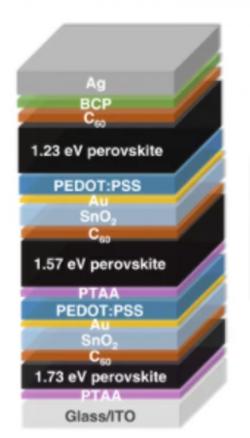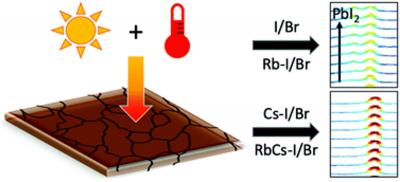Nanyang team designs mini perovskite modules with 18.4% efficiency
Researchers from Singapore's Nanyang Technological University have developed a mini solar module based on thermally evaporated perovskites with an efficiency of 18.4% and a geometric fill factor (GFF) of around 91%. The team believes that the panel could be a real step forward in the industrialization of perovskite mini-modules.
The panel has an active area of 6.4 cm2 and is based on co-evaporated methylammonium lead iodide (MAPbI3). The thickness of the MAPbI3 films was 750 nm, and the films were used to create solar cells with an 'n-i-p' layout on fluorine-doped tin oxide (FTO) glass substrates.




